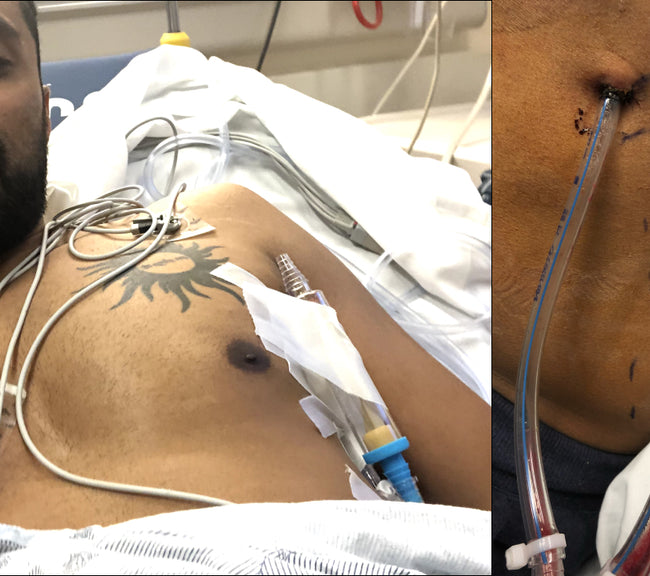Have you ever noticed an unusual bite on your skin after waking up? Even though you try, you can’t find an insect anywhere. You might have a bed bug infestation on your hands.
Bed bugs can be nasty pests, and the hide-and-seek game they play with you makes them worse! They are hard to detect and only bite while you are asleep. But, what are bed bugs, are they truly dangerous or a minor nuisance? What do you do when these nasty little intruders invade your bedroom? Read on to find out.
What are bed bugs and how do you identify them?
Cimex lectularius, more commonly known as bed bugs, are parasitic insects belonging to the Cimex family. They are tiny predators that feed on human and animal blood, usually at night. They are small with oval-shaped bodies and are mostly found in crowded places. Adult bed bugs have wingless reddish-brown bodies, while young ones appear yellowish or translucent. They do not fly but can scurry quickly across walls and floors.
Adult bedbugs are about the size of an apple seed, about 5 to 7 millimeters. They turn reddish and grow larger after feeding on blood, but still fit into surprisingly tiny spaces easily. This helps them hide in the most hard-to-reach places! Wherever there is blood to feed on, you might find them scurrying around.
On the other hand, nymphs, or young bedbugs, are even smaller, about 1 to 1.5 millimeters. Interestingly, they molt five times before maturing and require a blood meal before shedding.
Female bedbugs lay 1 to 3 eggs daily, totaling around 200 in their lifetime. These eggs often stick in place and can be difficult to remove. They are approximately 1/16 inch, yellow or white, and hatch in about 6 to 10 days.
These bugs can develop fully in a month, producing 3 to 4 generations yearly. Their lifespan is about 10 months to a year, depending on food availability and temperature.
Where do bed bugs live?
Since they feed on human blood, bedbugs live close to our shelters. These places include:
- Apartments
- Hotels, motels and hostels
- Public places like trains, buses, shared autos/vehicles, and taxis
- Dorms
- Cruise ships
- Campsites
- Electronics
- Luggage or Personal Items
- Crevices or Cracks in Floors or Walls
- Bed Frames
- Upholstered Furniture
- Seams and Cushions
What are the Main Causes of Bed Bugs?
If your home is infested with bed bugs, you can take comfort in the fact that these nasty little pests make their home in any dwelling. Cleanliness is not a factor, so it’s not a question of how tidy you keep your space. That being said, some common primary causes of infestations can help you avoid them.
- Neighboring infestations: Bed bugs can spread from neighboring houses, especially with shared walls. They can also migrate through electrical circuits and plumbing. They could spread into your home if neighbors delay their pest control.
- Cluttered Spaces and Hiding Places: We know we said that cleanliness wasn’t a cause of bed bug infestation, but clutter creates ample hiding spots for pests. They like to hide in dark spaces, and clutter creates more spots for them.
- Visitors: Don’t blame them, but your houseguests could bring bed bugs into your space. It’s not their fault because they don’t know about it.
- Secondhand Furniture: Bed bugs love to hide in furniture upholstery and, you guessed it, beds! Be careful when you get a good deal on a used sofa, because you might have brought some pesky stowaways into your home.
- Public Spaces: When you spend time in public areas like movie theaters or buses and trains, you might bring some of the little creatures home with you.
How Can I Tell if I Have Bed Bugs?
If these creatures are so tiny and play hide and seek with anyone trying to get rid of them, how do you know if they are in your home? Fear not, here are some ways to tell if you have a bed bug infestation.
- Itchy, red spots on your skin: You may develop itchy and uncomfortable red spots where they bite you. If you see dark red spots on your body but have trouble finding the cause, you might have bed bugs.
- Small red stains on sheets: Bloodstains may be visible where bedbug bites and skin contact your bedding.
- Bite marks: Such spots appear in small, compact skin areas or in a pattern.
- Small spots: You may notice tiny spots on carpets, bedding, mattresses, or other furniture.
How Do I Identify Bedbugs?
Since bed bugs are so small, they often go unnoticed. However, here are some signs that can help you identify them:
- They are reddish or brown and flat with an oval shape.
- They are non-flying bugs that crawl around.
- They shed light-brown mottled skin where they reside.
- They lay small white eggs that resemble grains of rice.
Are Bed Bugs Harmful?
The surprising thing about these creepy crawlers is that despite feeding on blood, they don’t carry and spread disease. However, their bites can lead to allergic or skin reactions in some people. Here are some of the potential problems caused by their bites:
- Skin reactions: The itchy welts can cause discomfort. Frequent scratching can cause skin infections or other adverse reactions.
- Insomnia: They disrupt the sleeping pattern of hosts, so a bed bug infestation could indirectly result in insomnia.
- Anemia: Bed bug bites can sometimes cause mild anemia due to blood loss.
- Anxiety, Stress: Their presence in the home can result in anxiety, paranoia, stress, etc.
While these pests do not cause illness directly, they can cause reactions that may impact your health significantly.
How Do I Get Rid of Bed Bugs?
If the infestation isn’t widespread, getting rid of bed bugs can be quite manageable. Some of the ways are:
- Organize your space: Organize the areas near your bed and mattresses and clean beneath them. Properly inspect and clean out hidden spots in your bedroom and home. This will cause them to move to a single prime area, where you can get rid of the rest of them quickly.
- Vacuum daily: Deep clean hidden spots such as crevices and cracks near the flooring or carpet, box spring, and bed frame.
- Properly wash your clothes and bedding: Temperatures above 122°F can harm the pests. With this in mind, wash clothes or bedding with detergent and hot water and dry them at the highest temperature possible.
- Freeze bedding or clothes: It’s a bit of an unconventional solution, but you could eliminate bed bugs by freezing your clothes and bedding.
The Takeaway
Having bedbugs in your home can cause stress and anxiety. Despite not causing illness directly, their bites can cause irritating skin conditions and allergic reactions. We’re sure you’d rather have a home free of these tiny parasites. To minimize the risk of infestation, use protective covers, seal crevices or cracks, and reduce the clutter near your bedding area. If left unchecked, these insects can affect your family’s health and peace of mind. So, it is essential to stay alert for signs of the pests to prevent them from spreading.






















